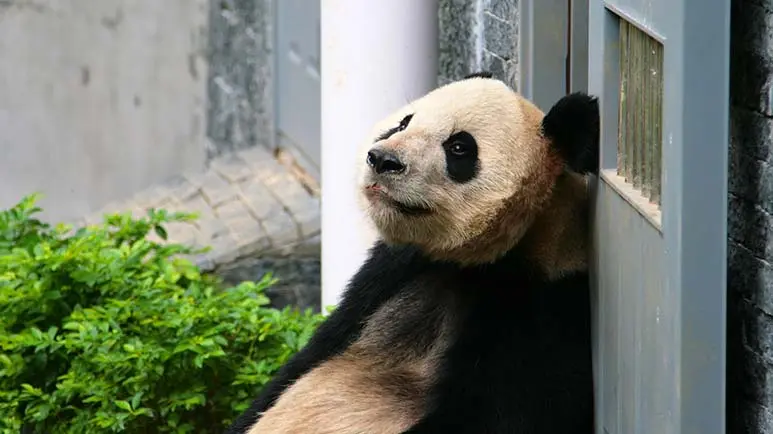When Night Becomes Day: The Hidden Cost of Captivity
Learn the untold story of how artificial environments in zoos disrupt the natural circadian rhythms of animals, leading to behavioral and physiological changes akin to human jet lag.

STORY AT-A-GLANCE
- The entire animal kingdom, from birds and reptiles to fish and insects, have circadian rhythms that regulate physical, mental and behavioral processes
- In captivity, little is known about how circadian rhythms change and whether it affects animal welfare
- A study involving captive giant pandas revealed the animals could experience “jet lag” if they’re living out of sync with their internal clock
- Where pandas live (their latitude) affects how much they move around; pandas living outside their usual climate zones are less active
- Zoos have a responsibility to provide as close to a natural habitat as possible, including offering animals appropriate choices and promoting circadian synchronicity
The entire animal kingdom, from birds and reptiles to fish and insects, have circadian rhythms that regulate physical, mental and behavioral processes. In the wild, these rhythms correspond not only with day and night but also with seasons, temperatures and other factors. This allows animals to anticipate changes in their environment and act on them to protect their survival.
In captivity, however, little is known about how circadian rhythms change and whether it affects animal welfare. A study involving captive giant pandas, by researchers with the U.K.’s University of Stirling, aimed to find out, revealing some concerning findings, including that pandas could experience “jet lag” if they’re living out of sync with their internal clock.1
Pandas in Zoos May Feel Jet Lagged
Environmental cues known as zeitgebers regulate internal circadian clocks. Common zeitgebers include cycles of light and darkness, food and temperature. Animals in zoos are commonly kept in environments with different light/dark cycles and temperatures than their natural habitats, while other zeitgebers are modified by humans, the scientists explained in Frontiers in Psychology.2
In humans, such disruptions may lead to jet lag and other disturbances. Study author Kristine Gandia told Phys.org:3
"Animals, including humans, have evolved rhythms to synchronize their internal environment with the external environment. When internal clocks are not synchronized with external cues like light and temperature, animals experience adverse effects. In humans, this can range from jet lag to metabolic issues and seasonal affective disorder.”
Giant pandas are seasonal creatures, which migrate in the spring in response to new shoots of bamboo emerging. Their migratory season coincides with breeding. In captivity, these environmental cues don’t exist while other unnatural ones — like regular visits with zookeepers — do. To find out how this affects giant pandas, researchers used live camera footage from six zoos.
Living in Captivity Affects Pandas’ Activity Levels, Behaviors
They monitored 11 giant pandas for 12 consecutive months, revealing that where pandas live (their latitude) affects how much they move around. Pandas living outside their usual climate zones are less active. The amount of daylight and temperature changes also play a role in their activity patterns.
"When giant pandas are housed at higher latitudes — meaning they experience more extreme seasons than they evolved with — this changes their levels of general activity and abnormal behavior,” Gandia said.4 Visits with zookeepers also influenced panda behaviors. The animals tended to become active in the early morning and displayed other abnormal behaviors, likely because they were anticipating their keepers coming in with food.5
Sexual behaviors were also affected, which could have implications for breeding programs, particularly since pandas are notoriously difficult to breed, the researchers said. According to Phys.org:6
“The pandas’ abnormal and sexual behaviors fluctuated at similar points. The researchers suggested this could represent frustration that they can't migrate or mate as normal. Pandas who lived at mismatched latitudes performed fewer abnormal behaviors, possibly because they weren't getting the same cues for sexual behaviors.”
Taking Animals’ Circadian Rhythms Into Account Could Improve Animal Welfare
Although animals can adjust to different conditions, creating a captive environment that closely resembles their natural habitat can support their innate circadian cycles. “The optimal external conditions for an organism to live in are the conditions for which their circadian rhythm has evolved,” according to the study.7
Zoos have a responsibility to provide as close to a natural habitat as possible, including offering animals appropriate choices and promoting circadian synchronicity. This approach could not only improve their well-being but also enhance breeding success and conservation efforts. For instance, some species operate on a different circadian rhythm than humans’ typical 24-hour cycle.
A marine worm called Platynereis dumerilii, for instance, lives by a lunar clock that’s separate from its circadian clock and controls when the worms spawn. Other marine species, like speckled sea louse, use tidal rhythms to decide when to burrow into the sand. And other animals, like Somalian cave fish, operate on a 47-hour cycle, perhaps because of the dark environment in which they live.8
Meanwhile, nurse bees stop following a circadian rhythm so they can care for larvae day and night, while migrating birds may pause their internal clocks during long periods of no sleep.9 As such, zoos should work to create environments that support these vast differences in circadian rhythms to promote natural behavior patterns and improve animal welfare. The researchers concluded:10
“Zoos can take this approach of systematically monitoring behavior, even if slowly over time, to understand their animals’ needs and apply the information to construct appropriate enclosures and husbandry practices/schedules, taking into account how those needs change cyclically over time.
As a community, zoos can also use this approach and information to conduct further research to address questions at the forefront of captive animal welfare on whether species should be housed outside of their natural climatic and latitudinal conditions.”








